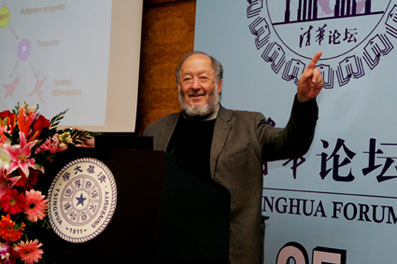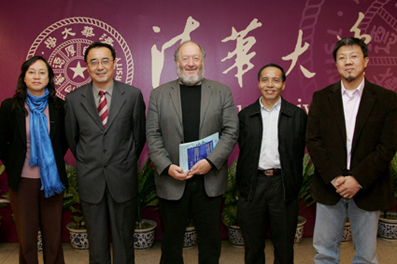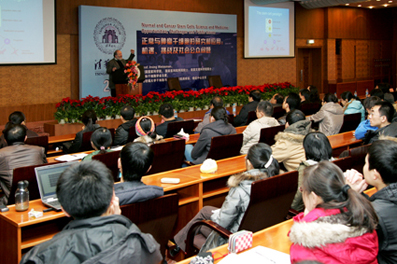
Dr. Irving Weissman, Director of the Stanford Comprehensive Cancer Center and Director of the Institute for Stem Cell Biology and Regenerative Medicine, Stanford University, visited Tsinghua University on November 19th. He visited the stem cell center and the immunology lab of Tsinghua’s School of Medicine and School of Life Sciences and delivered a speech entitled “Normal and cancer stem cells sciences and medicine: opportunities, challenges and public issues” to the Tsinghua Forum that day.
Tsinghua Vice President Weihe Xie had a conversation with Dr. Weissman. They exchanged opinions on student cultivation and future cooperation on stem cells.

In his speech, Dr. Weissman explained the definition of stem cell at first and then introduced his own research career on the application of stem cell against cancers. Finally he showed impressive examples to prove the hopeful prospect of stem cell research.

Dr. Weissman is the director of the Institute for Stem Cell Biology and Regenerative Medicine, one of the top stem cell programs in the world. In 1988, Dr. Weissman became the first to identify and isolate the blood-forming stem cell from mice, and has defined, by lineage analysis, the stage of development between the blood forming stem cells and mature progeny (granulocytes, macrophages, etc.). He subsequently isolated the human hematopoietic stem cell, the human neuronal stem cell, and the human leukemia stem cell. His work has opened up an entirely new area of scientific research with enormous potential for life-saving therapies.
Dr, weissman has received numerous awards including being elected as a member of national academy of sciences in 1989, being named California scientist of the year in 2002, received Robert Koch Prize in 2008 and elected as president for international society for stem cell research. In addition to being the Ludwig professor for clinical Investigation in Cancer Research, he is a professor of pathology and developmental biology, and, by courtesy, professor of neurosurgery and of biological sciences.
(From School of Life Sciences)
Photo by Guo Haijun

